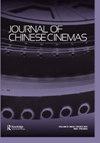Building the nation on 16mm: Film formats and the institutionalization of cinematic portability in 1930s China
IF 0.4
3区 艺术学
0 FILM, RADIO, TELEVISION
引用次数: 0
Abstract
Abstract This article examines the role played by the 16 mm format in shaping ideas of portable projection in 1930s China. Drawing on research into the Chinese educational film movement, I argue for a format-oriented approach to cinema history that tracks heretofore neglected aspects of how the state—as well as non-state actors—exercised power on and through cinema. As a portable format, 16 mm extracted cinema from urbanized film culture while offering its users access to a broader ‘national’ audience. Educators built a mobile 16 mm network connecting schools and mass education sites and formulated a discourse that sought to codify the place of ‘small scale cinema’ in the Chinese nation and in global media hierarchies. Small scale cinema was deeply contradictory. While promising to make cinema broadly accessible to the Chinese masses, 16 mm also restricted that access. While seemingly liberating cinema from the sway of global film culture and China’s treaty-port cosmopolitanism, 16 mm subjected mass education to other patterns of asymmetrical development. By examining how educational cinema was formed at the intersection of global film technologies and local institutional discourses, I formulate an approach to cine-governmentality that shows how the state’s control of cinema worked from the bottom up, as actors on multiple scales negotiated chaotic circulations of films, equipment, and ideas.以16毫米为基础的国家建设:20世纪30年代中国的电影格式和电影便携性的制度化
摘要本文考察了16 mm格式在20世纪30年代中国便携式投影的成型思想中的应用。根据对中国教育电影运动的研究,我主张对电影史采取一种以形式为导向的方法,追踪迄今为止被忽视的国家以及非国家行为者如何在电影中和通过电影行使权力的各个方面。作为一种可移植格式,16 mm从城市化的电影文化中提取了电影,同时为用户提供了更广泛的“全国”观众。教育工作者建立了一个移动16 mm网络,连接学校和大众教育网站,并制定了一个话语,试图将“小规模电影”在中华民族和全球媒体等级中的地位编纂成文。小规模电影是非常矛盾的。在承诺让中国大众广泛接触电影的同时,16 mm也限制了这种访问。虽然似乎将电影从全球电影文化和中国条约港世界主义的影响中解放出来,16 mm将大众教育置于其他非对称发展模式之下。通过研究教育电影是如何在全球电影技术和地方制度话语的交叉点上形成的,我制定了一种电影管理方法,展示了国家对电影的控制是如何自下而上的,因为不同规模的演员在电影、设备和思想的混乱流通中进行谈判。
本文章由计算机程序翻译,如有差异,请以英文原文为准。
求助全文
约1分钟内获得全文
求助全文

 求助内容:
求助内容: 应助结果提醒方式:
应助结果提醒方式:


